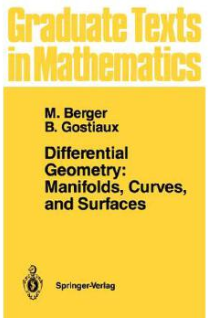
(The second part requires some point set topology.) That is, an undergraduate with the background listed in the preface would likely struggle mightily with some of them, though for the initiated they would be not difficult.Įxercise 4.1.4: Show that a unit cylinder can be covered by a single surface patch, but that the unit sphere cannot. Some of the exercises I saw were pretty hard. Latitude and Longitude Coordinates on a Sphere, from Pressley A person with the self-discipline to make an honest effort at each exercise would be glad of this feature. This makes the text a really good choice for individual study. Some seem a bit terse, but they do all seem to be addressed. (I counted that myself.) More importantly, there is also a 60 page section at the end of the book with fairly complete solutions to all of the exercises. I didn’t count.) There is a selection of hints for about 75 of them near the end of the text. You don’t get the “marble temple of mysteries” feel that some advanced textbooks can fall into. The writing is direct but relatively friendly. There are whole chapters devoted to the basic process of defining curves (chapter 1) and defining smooth surfaces (chapter 4). Notable FeaturesĪs you can see from the chapter headings, Pressley wants to lay out the basics very carefully. Keeping to the plan, I read chapter 4 Surfaces in three dimensions. Inner product spaces and self-adjoint linear mapsĬlearly, these are chosen to support some of the prerequisite material for describing curvature, understanding congruence, and dealing with hyperbolic geometry. We are already at odds.) There are also three appendices, enumerated computer-science-style:
#Elementary differential geometry pressley serial
(As you can see, Pressley doesn’t use a serial comma.

This text is definitely aimed at the modern student, and it conforms to the standard expectations for what a recent textbook on an advanced subject should look like. The tone of the writing bears this out, as does the author’s care to explain basic material. Thus, for virtually all of the book, the only prerequisites are a good working knowledge of Calculus (including partial differentiation), Vectors and Linear Algebra (including matrices and determinants). Pressley’s desired approach is to make the subject as accessible as possible. The book has an attractive price point from Springer, and you can get it from for even cheaper.
#Elementary differential geometry pressley update
The first edition is from 2002, with the update published in 2010.

It is time to return to the book reviews! Our next book is Elementary Differential Geometry, 2nd Ed by Andrew Pressley.

Pressley’s Elementary Differential Geometry


 0 kommentar(er)
0 kommentar(er)
